Review: Jitterbug
Screen
The external screen is small, and unless the backlight is on, it is has relatively low contrast, even though it is monochrome. Reading the large digital time display is not difficult, however the size the name or number of an incoming call is displayed too small for people with failing eyesight to read.
The internal screen is fairly large, especially considering its average resolution. The contrast on the screen is permanently set to maximum, and it appears the brightness is as well. Although this makes reading the screen difficult for people with good vision, it helps those with failing vision - to a degree. Changes to the interface and menu designs could have helped improve readability drastically over boosting brightness and contrast. More on this in the Menus section.
Signal
It is difficult to know exactly how good the signal strength of the Jitterbug is. There is no traditional indicator with bars. Instead on the fifth screen of the menus, there is a status display that describes the signal from Poor to Strong. If that display reads anything other than strong, voice quality is noticeably degraded. It is staticky on both ends of the call. The Jitterbug held a signal well enough that we could make a call in our vault test, but the call quality was so poor that it was difficult to hold a conversation.
Sound
Surprisingly, the Jitterbug does not have an extremely loud speaker. It is loud enough, but not deafening as you might expect. This may actually be intentional based on some older people's propensity for yelling into phones. Even with the volume turned up to max, a normal conversation was not so loud as to hurt. At any volume, calls were clear and sounded natural as long as the signal was strong.
In a call, pressing up on the volume when it's on max will bring up a dialog box asking if you want to use speakerphone. Unlike regular call volume, speakerphone is absolutely deafening. Holding this up to your ear would likely cause hearing damage. It is also very distorted, as would be expected for such a loud volume.
There is only one ringtone on the Jitterbug; it is an ascending series of high pitched tones. When set on high (3 on a scale of 0-4), it is loud enough to be heard in most situations. On max it is both loud and distinctive enough to be heard in almost any conditions. Oddly, the voicemail alert actually sounds like a ringing phone.
Battery Life
The battery life is difficult to determine for a number of reasons. First, it is likely that many elderly users would only have the phone on when they are making or expecting a call, not whenever they have it with them. If this is the case we would need months to determine how well the Jitterbug holds a charge when off.
It is also difficult to predict how many calls an elderly person might make on a cell phone and what length they would be. When making a only few short calls per week (not per day) and leaving the phone on standby the rest of the time, the Jitterbug lasts about 9-10 days. When using the phone for more regular calling (a few short to half hour long calls per day), it last about 4-5 days.
However the worst part of figuring out how long the battery actually lasts would be the rather inaccurate battery indicator. Like the signal strength, the battery indicator is displayed on the status screen. It is displayed as a percentage, not a word, however it is not an accurate percentage, it only displays 100, 75, 50 and 25 %, like a visual battery indicator. That alone is not why the indicator is inaccurate. The status will often fluctuate back and forth between two numbers on different visits to the status screen, even if you have done nothing that might have affected the battery like making a call.
When the battery indicator starts displaying 25%, a "warning" to charge the battery will appear on the screen every time you open the phone. The problem is the warning is a green box (green is not a color for warnings), with small text reading "Charge battery" that only flashes on the screen for about 2 seconds. If you are not quick to look at the screen, even those of us who are young would miss it, and certainly miss the fact that it is a low battery warning.
Worse is that despite the big buttons and thoughtful design of the handset itself, the charging system was not designed with the elderly in mind at all. The charging connector is a tiny plug that must be fitted into an equally tiny hole hidden in a dark strip along the bottom of the phone. This is not user friendly for people with degraded vision or motor control. Young people with poor eyesight had a difficult time finding the plug and getting connected when I tested them with it. It seems as if GreatCall and Samsung did not expect their elderly users to actually charge the Jitterbug themselves.


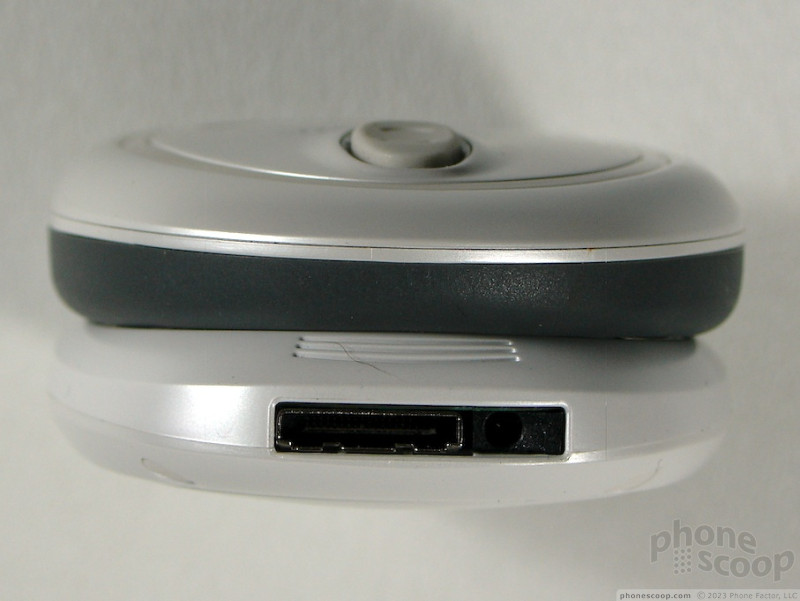



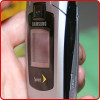 2006 Holiday Pre-Preview
2006 Holiday Pre-Preview
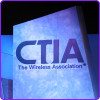 CTIA 2006
CTIA 2006
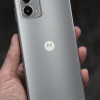 Hands On with the 2023 moto g 5G & moto g stylus
Hands On with the 2023 moto g 5G & moto g stylus
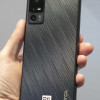 Hands On with TCL's $120 5G Phone
Hands On with TCL's $120 5G Phone
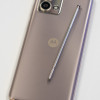 Hands On with the moto g stylus 5G (2023)
Hands On with the moto g stylus 5G (2023)
 Samsung Jitterbug SPH-A110 / A120
Samsung Jitterbug SPH-A110 / A120







